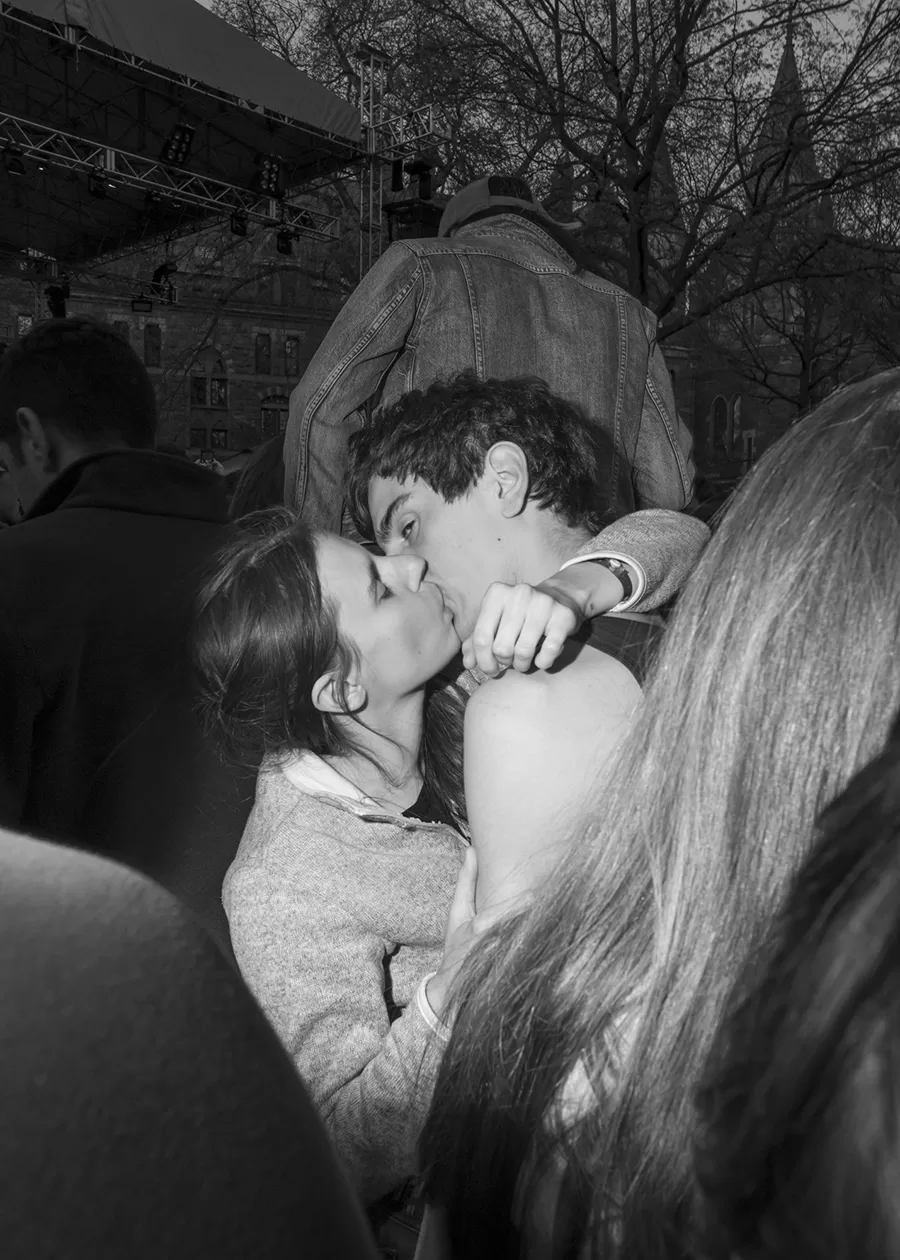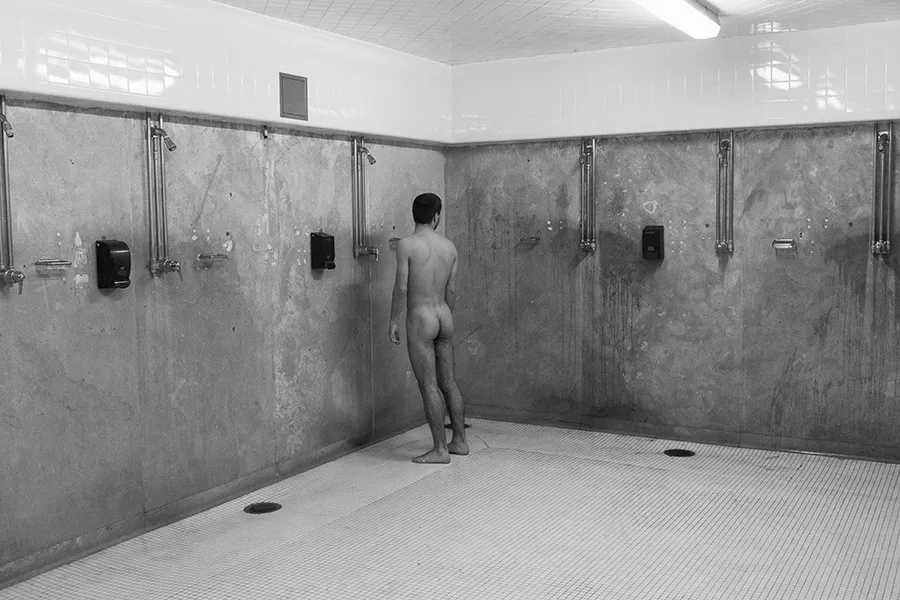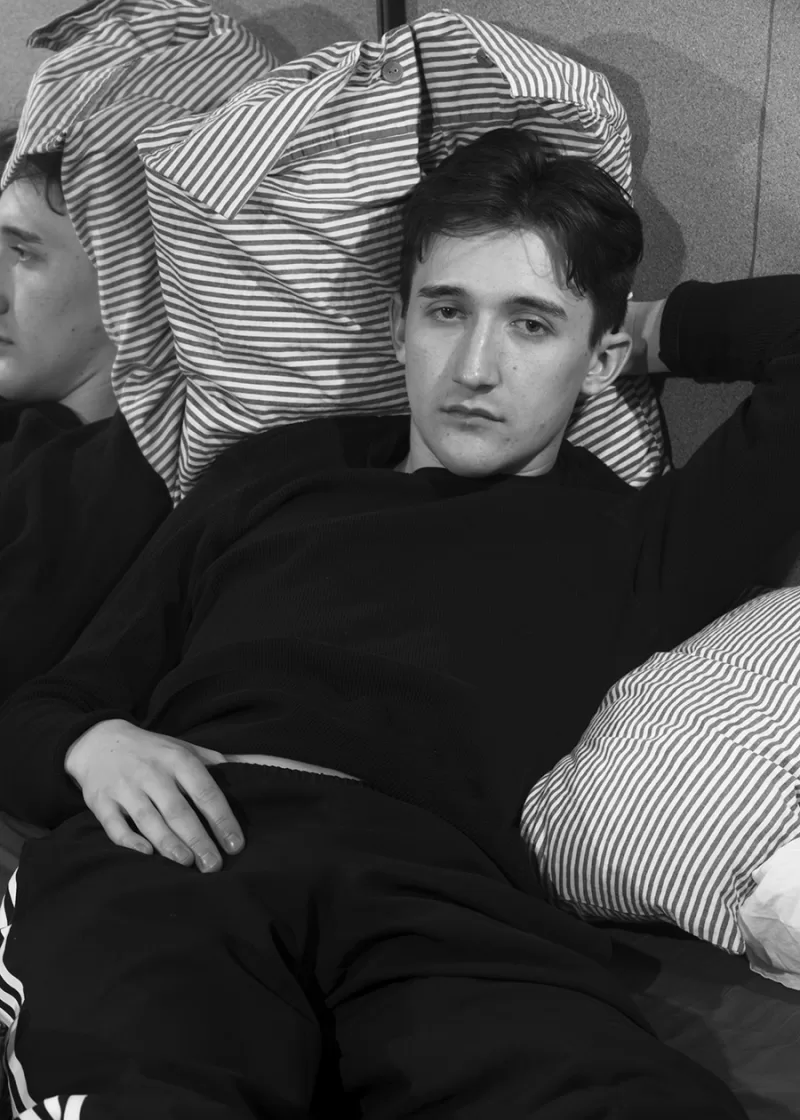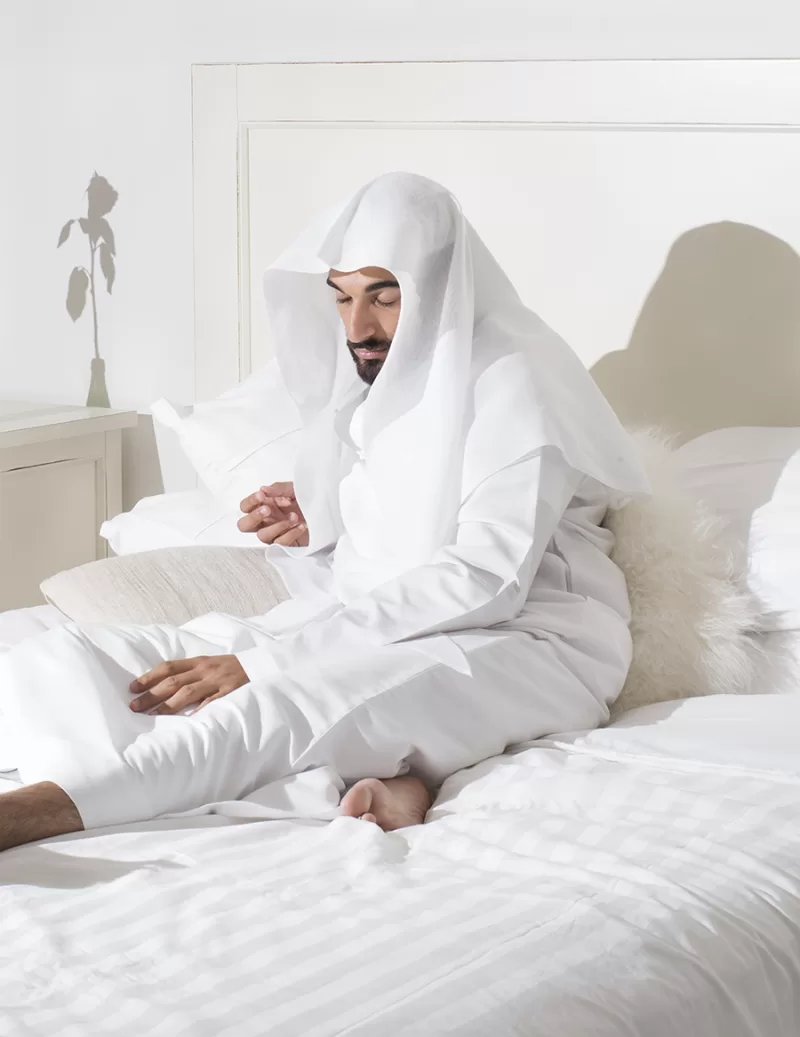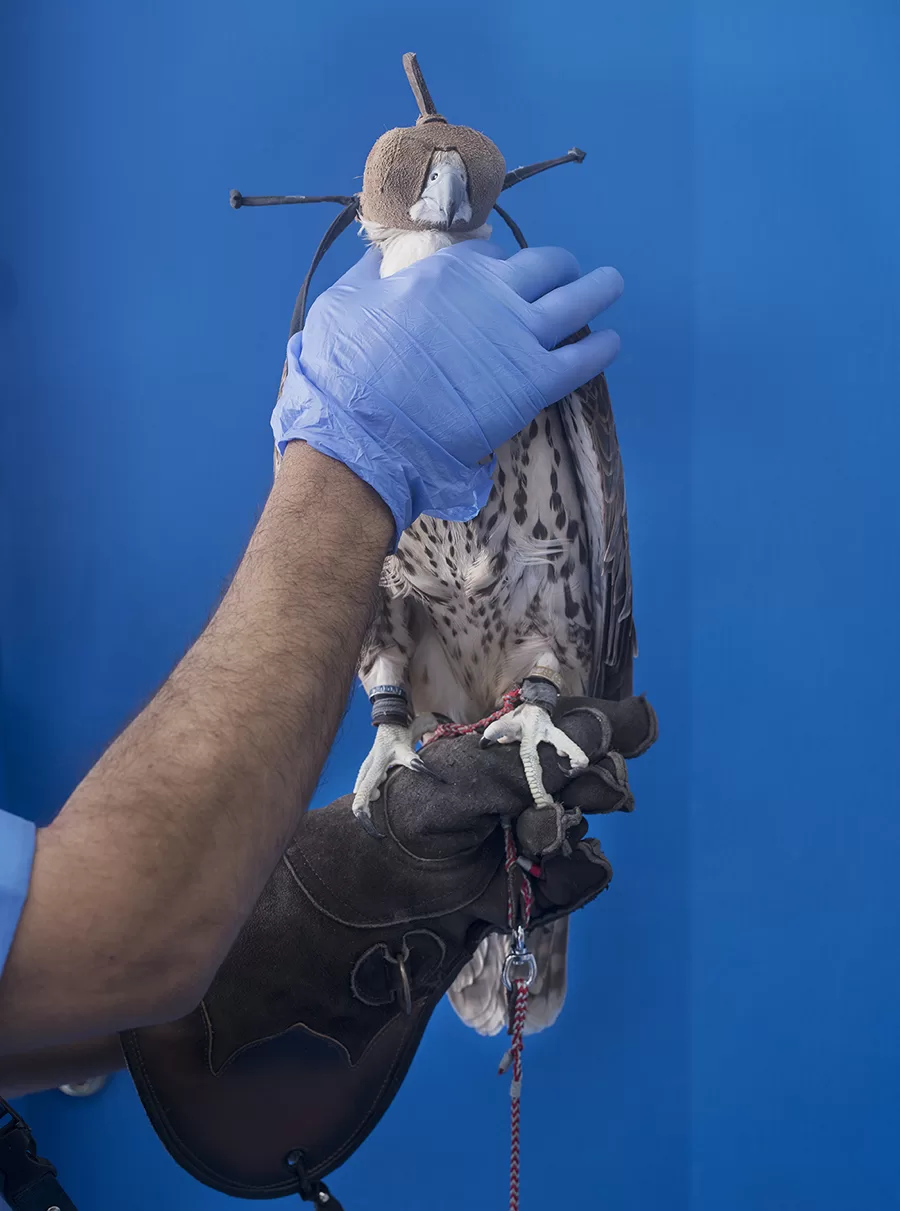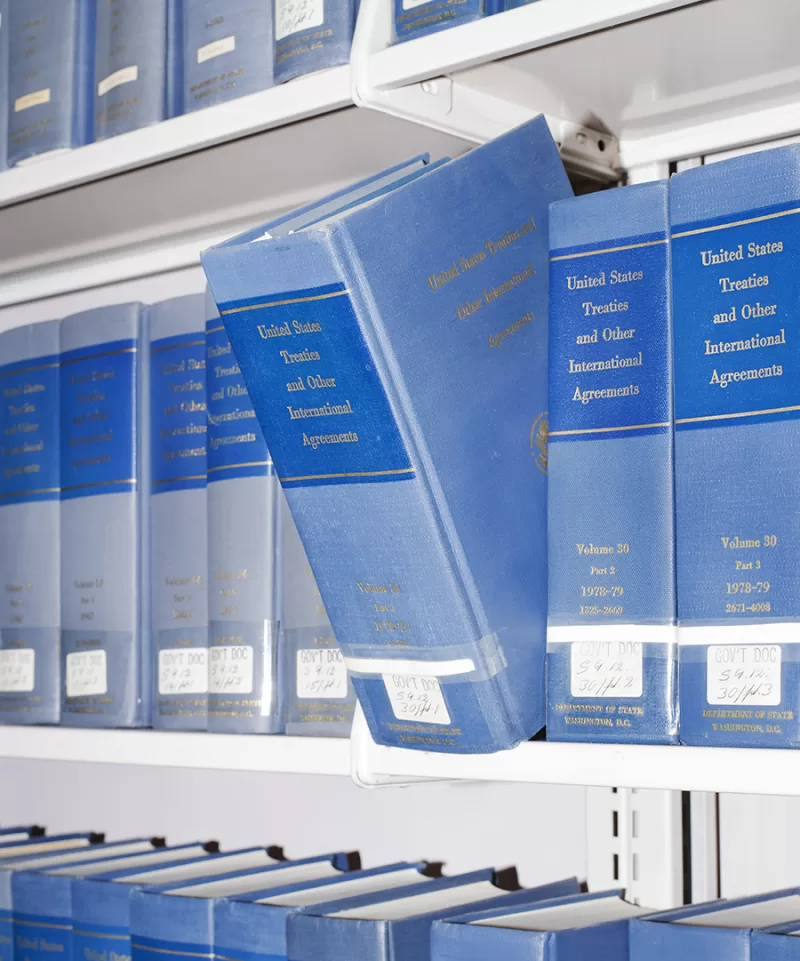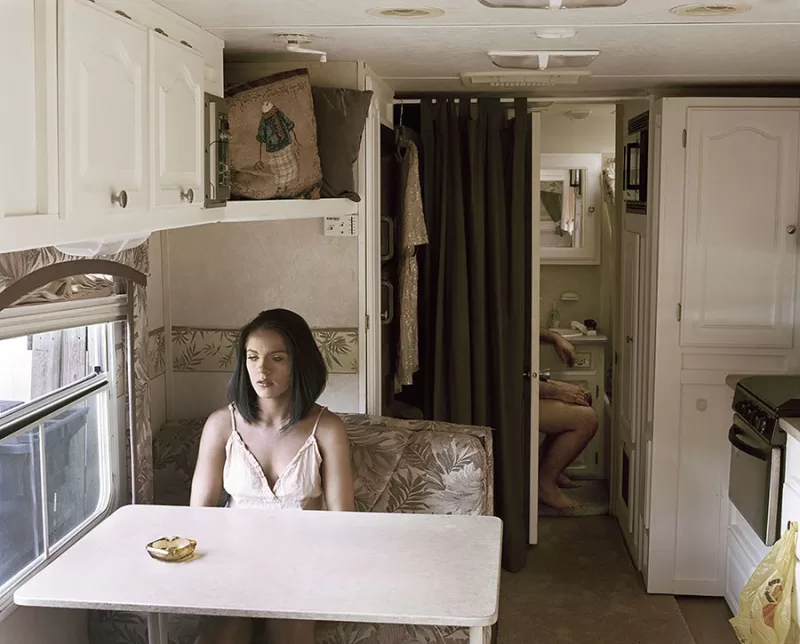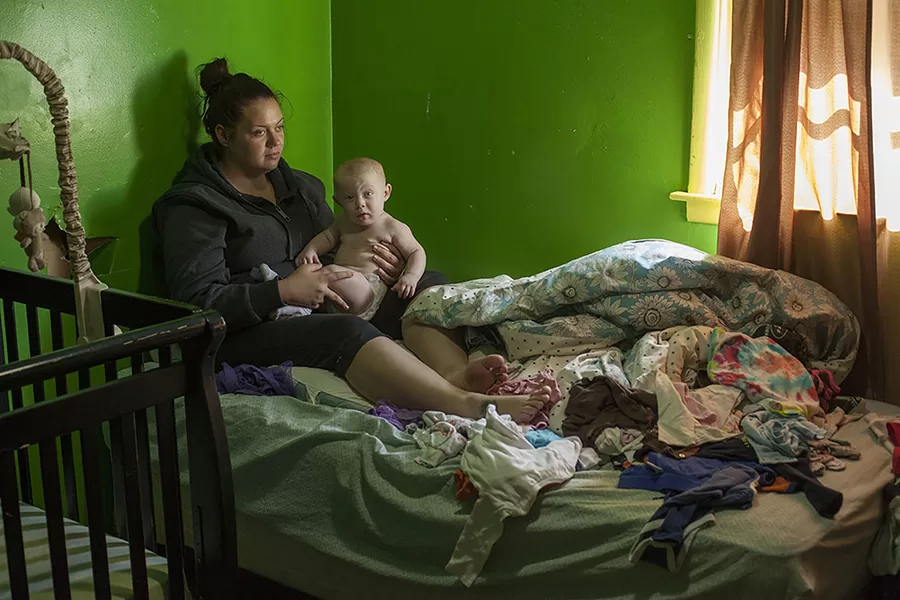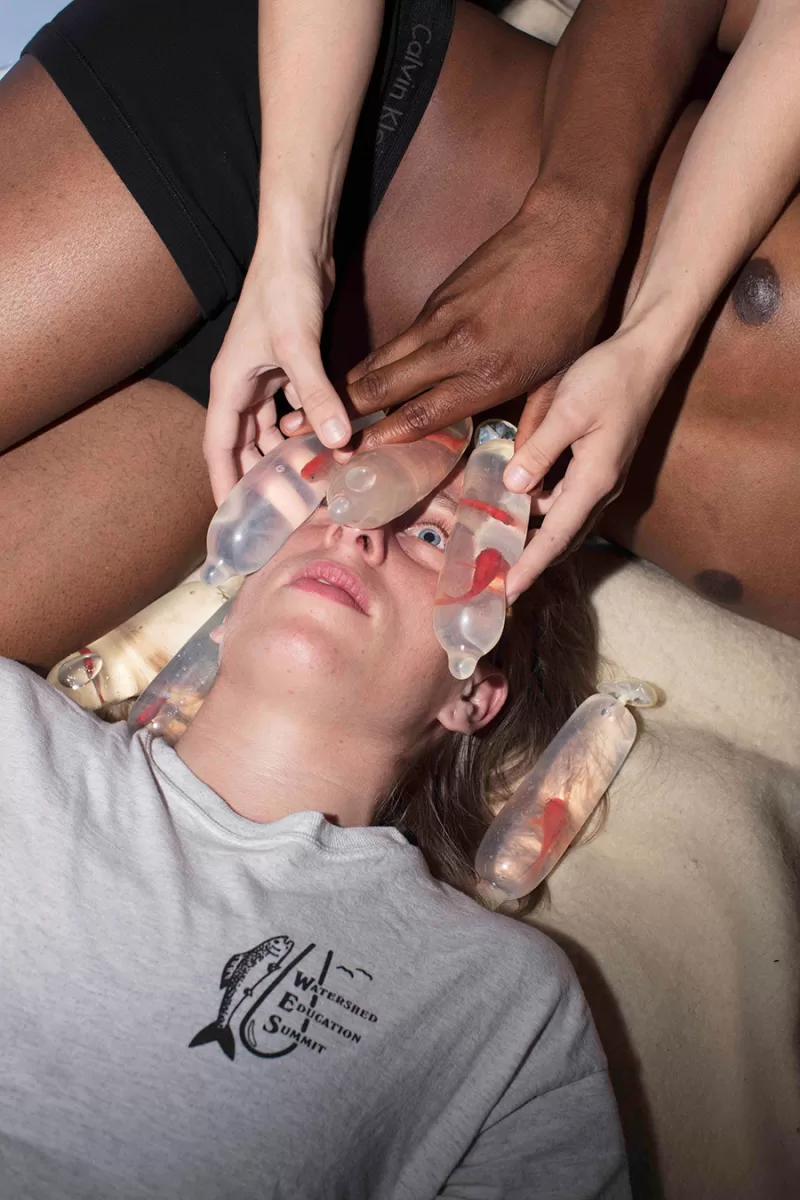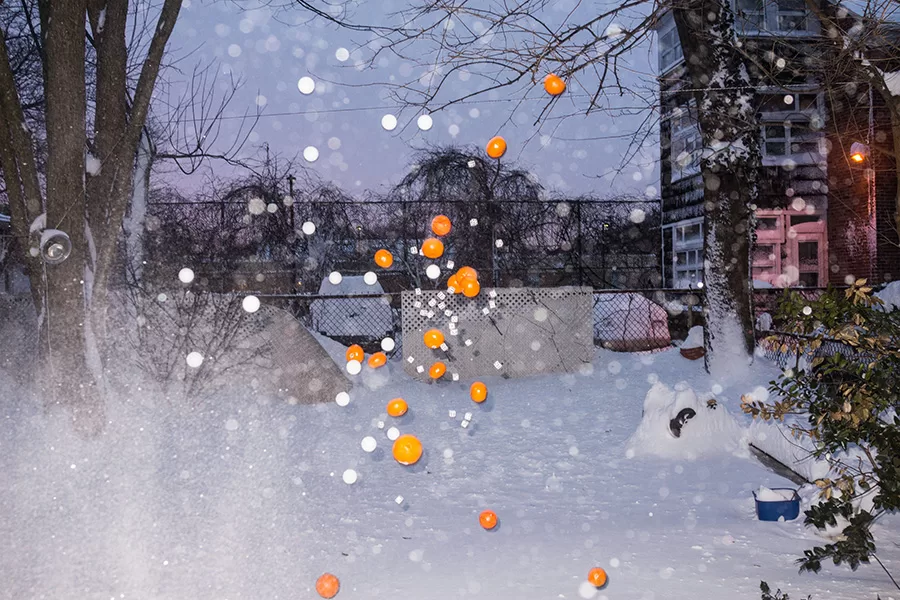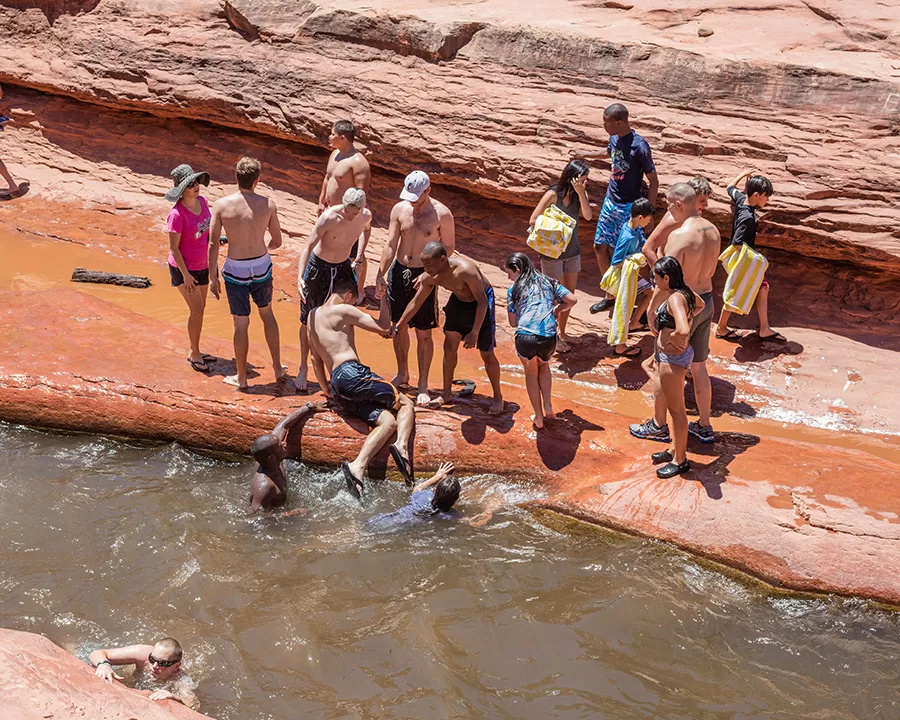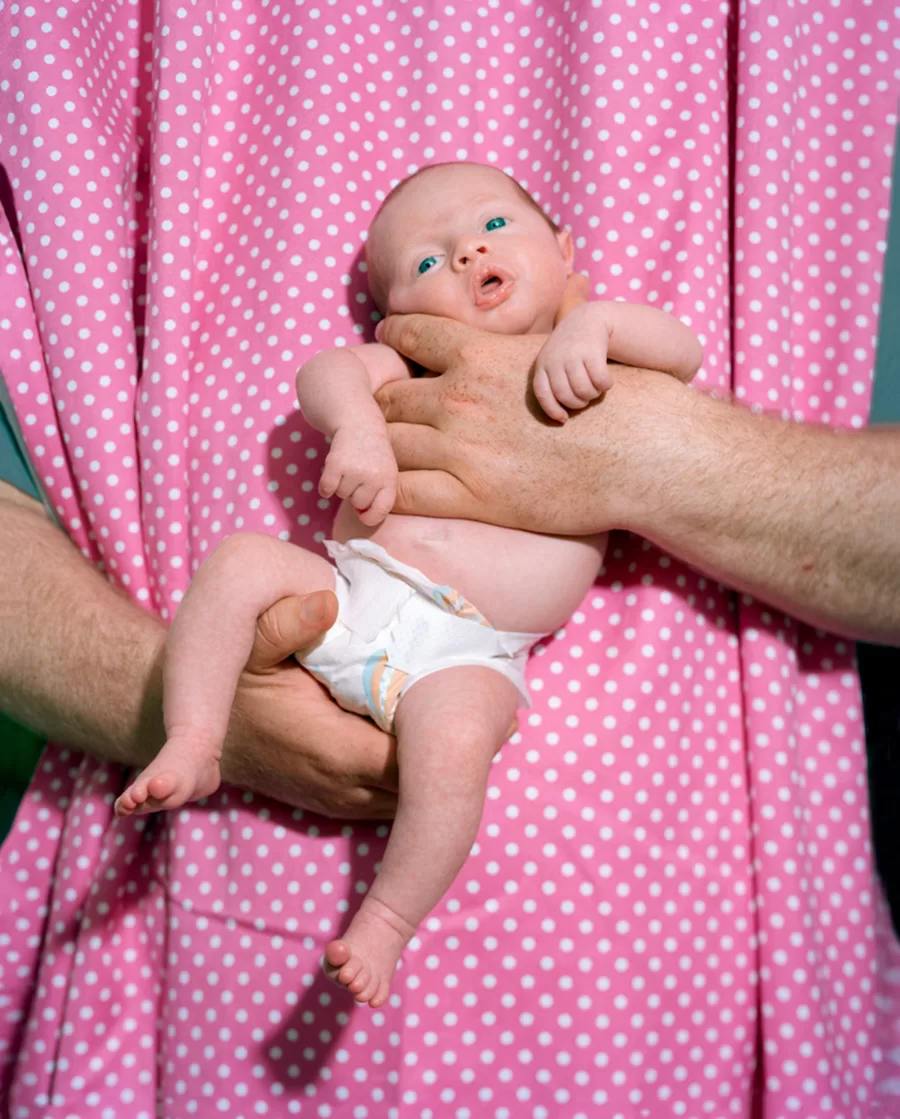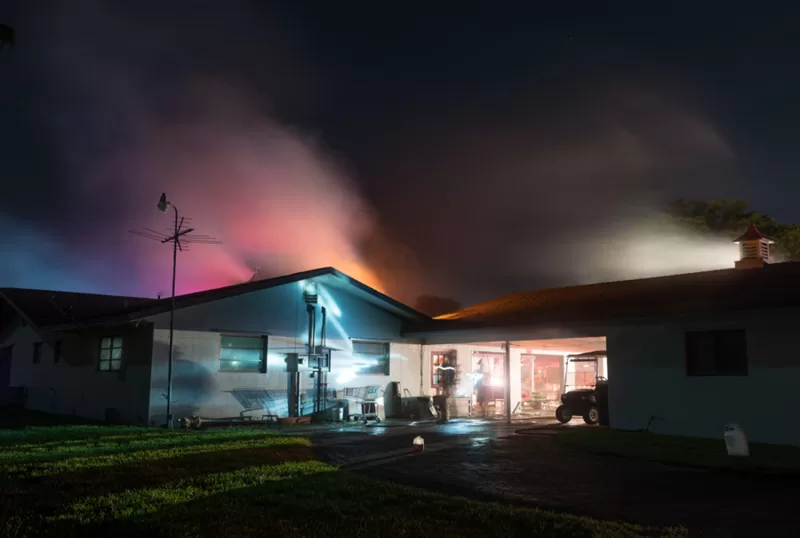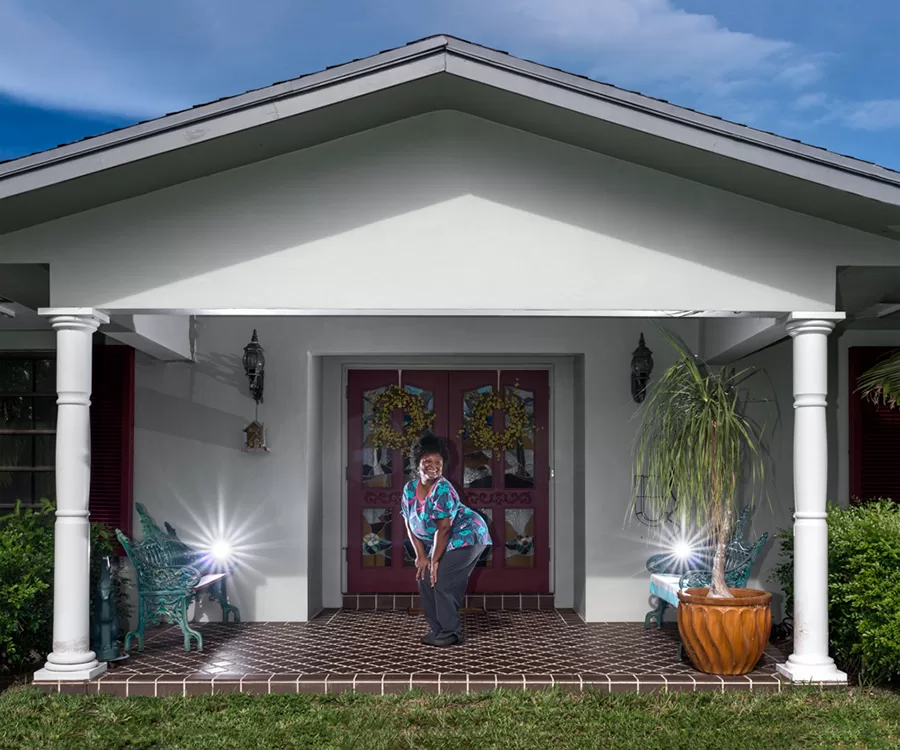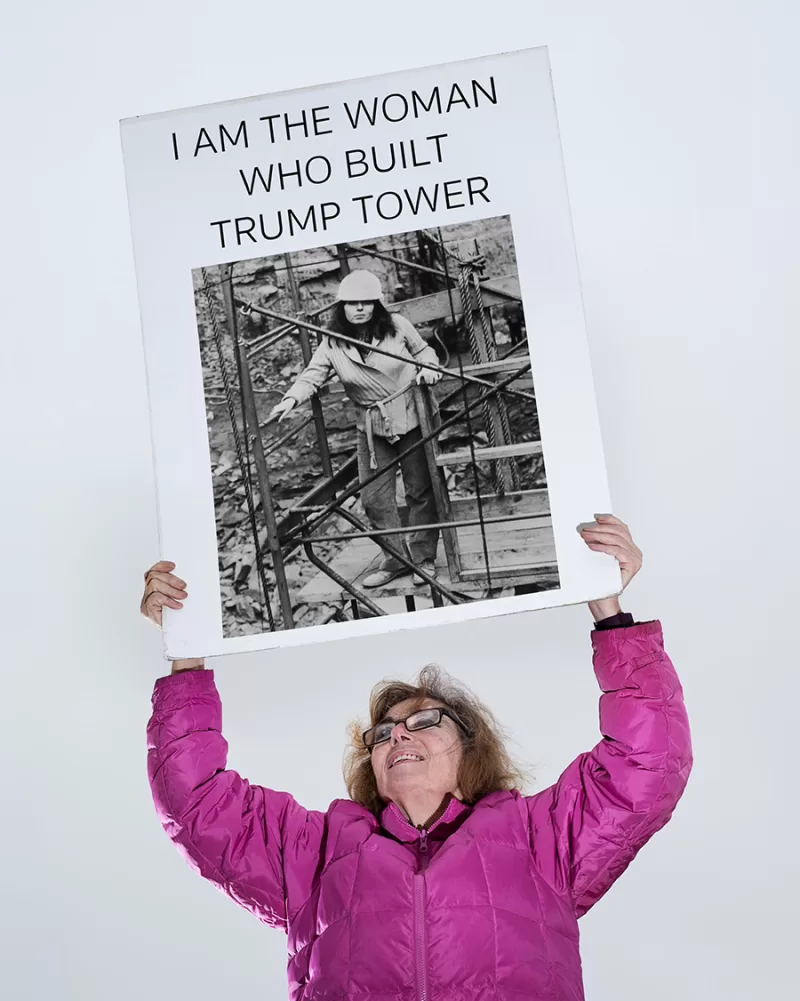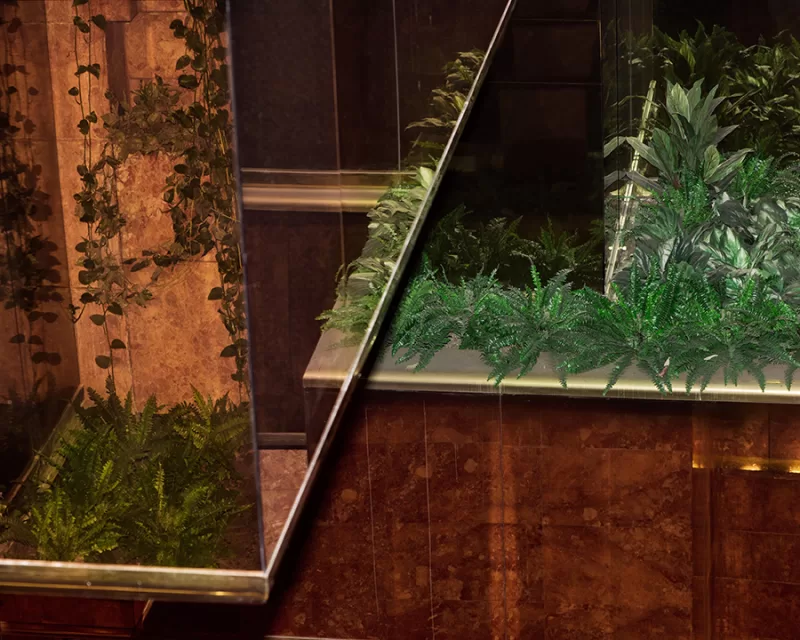Interview – Yale School of Art Photography Graduates 2017
Matthew Leifheit
After studying at Yale, what is your idea about photography? Or how has it changed?
One effect of grad school has been that I’m trying to make my pictures more mysterious, less easy to figure out. Lately I am more interested in pictures that reveal themselves in a slower way. But in general, going back to school and having only to worry about making work for two years really allowed me to reevaluate the scope of what I’m trying to accomplish.
Some things that haven’t changed are that I still value a sequence of images over singular frames, and that I love books and magazines.
What was good about studying at Yale? Is there a particular event/course/project you want to talk about?
Really what was good about Yale is that there are people here who love photographs and the history of photographs in a very traditional sense. As in, not artists using photography, but capital P Photographers. There’s also a wide range of critics and teachers with different perspectives, but it does seem to have more of a connection to photography’s roots than other MFA programs in the US.
The core of the program is the critique, where each student has to show new photographs every 5 weeks. They bring in a panel of visiting critics (famous artists, writers and curators), and some of haven’t seen your work before. Often they say things to your face that people would normally only say behind your back, which is unpleasant to endure but ultimately productive. I’ve been in art school before, at the Rhode Island School of Design where I studied photography as an undergraduate, and I understand that the even negative critique isn’t personal—it’s a professional exercise we undergo because it makes the work better. Still, it’s hard not to take things personally when you have a lot of yourself invested in the pictures.
Who is your inspiration?
Ray Johnson, and other artists like Warhol who are interested in the circulation and proliferation of images. Peter Hujar is my favorite artist, which I don’t have a problem saying at all. The films of Douglas Sirk, Lifetime original movies, Unsolved Mysteries on TV. I’m inspired by Jeremy O. Harris who writes amazing plays. And my friend Rachel Stern, who is my model for how to exist as an artist.
What is your graduate project about?
The pictures were taken at Yale from 2015-2017, and they all show undergraduate students—varsity athletes, social events, secret societies, and all the rest. I published an edition of just 10 copies of a book, Time in New Haven, that includes 90 of my photographs taken during my time here. Some were taken on assignment for student publications like the Yale Daily News, where I was a staff photographer, and others were images I wanted to see. I am hoping that someone might see the book and want to publish a larger edition someday…
The book is not directly “about” anything, which maybe sounds evasive, but I really think lately that I’m not trying to tell people what to think with my work. I believe this impulse is related to experiences I’ve had working with photojournalists, where they are tasked with having to convey some kind of balanced version of the truth. I want to present a kind of archival truth that allows different people to draw different conclusions, like a set of facts that might provoke different responses. For me there is a lot of beauty, darkness, sex, and anxiety in the pictures. They’re both about the time we live in and a practice of historical reenactment carried out by the Ivy League, perhaps of a time that never really existed.
What will be your next steps after school?
I’m teaching a graduate level class at Yale next fall as part of a fellowship I was awarded at graduation. They asked me to design my own class, and it’s called “How to Do Everything.” It’s about photographs in reproduction—everything from self-publishing books and magazines to pitching stories to major publications. I’m also teaching a class on contemporary issues in photography at Pratt Institute in Brooklyn, where we’ll go to a lot of shows and talk about them. And I’m going to do some studio manager-type work for an artist I admire. Even after graduate education in photography, I still feel like there is a lot I can learn from people whose work I truly respect. These seem like ways I can make money while feeding my love for photographs by being around other people with the same obsession. Other than that, I plan to keep my work alive, and to keep publishing the magazine I publish, MATTE. And some books, I’m publishing some books of other peoples’ work.
Why would you recommend this programme to someone interested in photography?
Unfortunately I think someone would need to be more than interested in photography. This program is probably best for a person who can’t not take photographs.
Farah Al-Qasimi
After studying at Yale, what is your idea about photography? Or how has it changed?
I’ve been thinking more about the materiality of photography, about what it means to use a camera and make flat images. The ways that they live in the world independent of their makers and how they emit a language of their own. I’m less interested in the idea of a “good” or “successful” image, and more invested in building a whole out of multiple moving parts – and in figuring out why people feel the need to trust a photographic image. So, the bottom line is that I am now asking myself: “Why photography?” – and that feels more like an exciting question than a terrifying or hopeless one.
What was good about studying at Yale? Is there a particular event/course/project you want to talk about?
I feel really privileged to be in community with my classmates – I think the Yale School of Art is a good size for harboring closeness without feeling overly insular. I feel like I’m going to know so many of these people for the rest of my life, and I will always want to hear their ideas. It’s also amazing to have Yale University at your fingertips – I got to take a great class called “Islam in the American Imagination,” and I exercised at the second largest university gym in the whole world. There’s also a room in the Arts library where you can request to view MFA portfolios since the 1970’s, and that is a very special thing.
Who is your inspiration?
This might sound cheesy but I am constantly inspired by my classmates! I get to watch them dedicate themselves to work that they believe in. And I believe in it too. Oh, and I saw a talk by Genesis P-Orridge that I still think about when I want to feel inspired.
What is your graduate project about?
It’s a look at diplomacy, war and trade as the main points of contact between nations – with focus on the USA and the UAE, my two native countries. I’ve been reading about the idea of state fantasy, and finding ways to visually materialize a sense of power as it relates to casual exchanges and agreements made between two men. I’ve also been looking at family archives from my father’s career as a diplomat: paying attention to the handshakes, dinner party food, meeting room furniture, things like that.
What will be your next steps after school?
I have a couple of residencies coming up, so I’ll be traveling for a while. I’m spending the summer in residency at Skowhegan, hoping to catch up on lots of reading and work on a longer performance piece. I’ve never worked collaboratively before and I’d really like to do that, too.
Why would you recommend this programme to someone interested in photography?
It’s a program for people who love to make photographs, but there’s room for veering outside of that, if you are willing to seek truly critical dialogue rather than waiting for it to come to you. It teaches you to be resourceful and resilient in often painful ways. But I would wholeheartedly recommend it to people who privilege community above all else – the only way this (or any other) program really works is if you are present, vulnerable and generous.
Danna Singer
After studying at Yale, what is your idea about photography? Or how has it changed?
When I first came to Yale, I had a very specific idea about what art photography was. It was steeped in formalism, tradition and craft. I still value all of those elements but I have made room for other ideas. I loosened up, pulled far away from where I felt comfortable and began making what I considered sloppy images. Over the two years, I brought it back toward the center and found something that felt both formal and open in my mode of picture making.
What was good about studying at Yale? Is there a particular event/course/project you want to talk about?
Yale changed everything for me. I had two years without interruptions to focus on my work and I got to have an amazing panel of artists and classmates to help guide me through my successes and failures. I particularly loved Rick Moody’s writing class. He taught a class geared toward second year students and the artist statement. It was instrumental in my coming to terms with the reasons I was making work.
Who is your inspiration?
There are so many and across the spectrum of genres it’s hard to know where to begin. I would say, my first true inspiration was Sally Mann. Her work gave me permission to make the work I was interested in making. Intimate documents about family. I’m very fond of Junot Diaz’s writing-it’s equal parts street and sophistication. I’d throw in a little Diego Velázquez, Susan Meisales, and Diane Arbus for good measure. And lastly, I think Lynsey Addario is pretty bad ass!
What is your graduate project about?
For my thesis project I photographed my friends and family from my hometown in New Jersey. The work focuses on the struggles of the working class, the cyclical nature of poverty, substance abuse and mental illness.
What will be your next steps after school?
I would like to make a book of the images I’ve been working on for these last two years. I will teach and continue making socially concerned work and with any luck, work on long form stories.
Why would you recommend this program to some interested in photography?
The faculty and the community that you will make while there!
Walker Olesen
After studying at Yale, what is your idea about photography? Or how has it changed?
Photography is the fastest medium— you can make a picture in a four thousandth of a second. Whereas the technology of oil paint has been stable for centuries, the foundations of photography are constantly changing under our feet. Photography is fast and flowing.
Photography is also the easiest medium— all you have to do is push a button. You can ask someone else to push it for you.
What was good about studying at Yale? Is there a particular event/course/project you want to talk about?
Collaborating with so many talented young artists across disciplines, especially through dance. During the first year I participated in a workshop Yvonne Rainer directed. My group devised a dance involving shake weights and self-defense flashlights. A highlight of this year was dancing with Drama student Jeremy O. Harris in the Yale School of Drag.
Who is your inspiration?
Elizabeth Ahn, Orr Amran, Selva Aparicio, Charles Bernstein, Jojo Brandel, Michael Breslin, Lex Brown, Tom Burr, Lauren Chun, Liz Deschenes, Marten Elder, Franz Fanon, Leland Fowler, Jeremy O. Harris, Leslie Hewitt, Roni Horn, Iris Hu, Whitney Hubbs, Alex Jackson, Wes Larios, Sydney Lemmon, Bozo Mag, Ivy Olesen, Cathy Opie, Jakeem Dante Powell, Iman Raad, Claudia Rankine, Sean Raspet, Amadeus Regucera, Elizabeth Stahlmann, A.L. Steiner, Wu Tsang, Jim Welling, Kristin Walsh, and all of my photo classmates!
What is your graduate project about?
Water as a solid.
As an object.
Liquidity inc, liquidity ink.
In the first image orange inkjet ink depicts a sunset on an icy beach day. In the second image that orange ink is photographed, then printed with itself. Then the orange swims, but not too far, as goldfish. It explodes through the air as snow, as tiny basketballs. It is light shining down into a pool, then it is the rock that a swimmer is hoisted onto. It underlies a grid of magenta ink, and disappears into the green of a pond. Bending light and liquid ink, frozen for a moment in photographs.
Play,
manual photoshop,
modern dance as love affair with gravity,
chance doesn’t exist in photography.
What will be your next steps after school?
Make work with my sister Ivy, dance and do a little surf tour from New Jersey to Maine, then one from Baja California to Oregon.
Also Ivy and I will bring home a championship for the Black Mountain College Basketball team.
Why would you recommend this programme to someone interested in photography?
Watching Eva O’Leary’s Happy Valley (MFA ‘16) pictures roll out of the printer when I first got to school, seeing Rodrigo Lopez Gomez’s Axiom series (MFA ‘19) as I leave.
Harry Griffin
After studying at Yale, what is your idea about photography? Or how has it changed?
Photography can be many things. It can be a Pigment Print on Semimatte or it can be a UV print on aluminum. A cardboard cutout is a photograph, same as a JPEG. Half of my work is video, I see it as an extension of my photography practice. There’s a balance between weight and weightlessness in images that I find compelling right now. During my time at Yale my ideas about photography shifted to what images mean, what they can represent, and when to intervene. Having studied in a photography program rather than an interdisciplinary one has allowed me to explore my ideas while still having foundation in a lens based practice.
What was good about studying at Yale? Is there a particular event/course/project you want to talk about?
The libraries are incredible! I’ve had books checked out for two years. The Beinecke Rare Book & Manuscript library is an unbelievable building, I highly recommend people come to New Haven just to see it. Some of the classes and professors at Yale have had a huge impact on how I make work. One class, World of Screens, taught by Bernard Geoghan and Francesco Casetti was particularly memorable. We discussed the historical and alternative understandings of what screens historically meant, such as in filters and shelter, along with screen history in cinema. However, the best aspect of attending Yale are the students. They have been as impactful as, if not moreso, the academics. I’m amazed by my peers.
Who is your inspiration?
Carol Wright Gifts®, my Grandparents, Mike Kelley, Hito Steyerl, Keller Easterling, the World Wide Web.
What is your graduate project about?
My thesis exhibition in New Haven was an installation of photography, sculpture, and video. The work in New York is a sampling of my thesis. In May 2016 I made a video called Open House. The narrative is a real estate agent shows a house to a client. The house exists as a computer rendering and the characters move through it unaware of its artifice. In the gallery I built a 8 ft x 12 ft wall. On one side was an adhesive print of an aerial view of the rendered house. The other side had exposed building material and screens mounted to its studs.
Before Yale, since 2006, I had been collaborating with my grandmother in South Florida. It began with photography and later I introduced video. She wasn’t an artist, but she was obsessive and creative; a folk artist. She authored an exact 1:12 ratio model of her house in the seventies, which sat in the middle of her house. Domestic uncanny. Whenever I would visit I would photograph her and sometimes the replica. In the summer of 2016 I started recording footage of her and my grandfather in the house. I also recorded footage of, and inside, the replica. August of 2016 she died; on the night of her funeral, after the reception, a fire erupted in the attic. Most of the guests had left at that point, but a few of us were drunk at my aunts across the street. My grandfather was in the house with his personal support worker, she saved him. I had to recover my camera equipment from the burning room. Once I did, I filmed and photographed during the burning, and also downloaded news footage from YouTube. I spliced that footage with the earlier content for the video, PeeWee. With most of the house decimated, the replica survived. I shipped it to New Haven and installed it in the gallery, which completed the installation. I made miniature frames and installed the photographs at one-twelfth scale.
Tldr; my thesis is a tale of two houses; one that doesn’t yet exist, with one that ceases to exist.
What will be your next steps after school?
I’m looking forward to getting back into the pace of new work, New York!
Why would you recommend this program to someone interested in photography?
The different perspectives students bring to discussions of the photographic image makes me excited for the future of the medium. The intensity of a place like Yale further energizes both new ideas and practices. This includes other departments, too. Graphic Design, Painting & Printmaking, and Sculpture all have students producing extraordinary work.
Res
After studying at Yale, what is your idea about photography? Or how has it changed?
Photography is a very vast medium. Working so closely with 19 other photographers who approach photography in wildly different ways has expanded both my appreciation for picture making and different photographic vocabularies. I don’t think the program changed my relationship to the medium at root, in fact the opposite: it solidified it. I know that I am interested in connection. I want to be in the space I am photographing – not just observing it (and I try to make that very clear through form) but through my approach to how I construct the photographic space. After the past two years, I feel less attached to having a defined style. I am beginning to think more about how I can use different photographic languages to speak in different tones and reference different photographic histories.
What was good about studying at Yale? Is there a particular event/course/project you want to talk about?
I think the best part about this experience has been working so closely with such an incredible group of artists, both faculty and students. To be in community with such hard working, dedicated and engaged artists is such a constant gift. Our engagement is not limited to studio visits and late nights at the bar, although both are wonderful. I have been able to work on so many different projects here with peers and faculty, ranging from curating the first queer art show at the Yale School of Art to helping form a student run diversity committee. I know I have made some life long friends, as well as collaborators. I am excited to see these relationships grow long after we leave Yale.
Who is your inspiration?
Recently I have been very inspired writers who combine different genres throughout their bodies of work; Hilton Als and Maggie Nelson, for example.
What is your graduate project about?
The work that is currently travelling with the Yale Photography 2017 Thesis show is a project I am working on with my mother, Barbara Res, who was the manager of construction on Trump Tower and the Executive Vice President of the Trump organization for nearly 20 years. The work engages her involvement with the Trump Organization, how that influenced our family and the way photography has functioned in the construction of myths of power and success. (For the record she and I are very anti-Trump).
What will be your next steps after school?
I was given a FLAGS (Fund for Lesbian and Gay Studies) award from Yale and will be travelling to Orlando this summer to continue a project I am working on related to the tragedy that occurred at PULSE.
Why would you recommend this programme to someone interested in photography?
It is a very specific program– it requires an incredible amount of dedication and you have to work very quickly. I would encourage anyone interested in the program to visit Yale, speak to the current students and attend a critique. The Critiques are weekly and open to the public!

